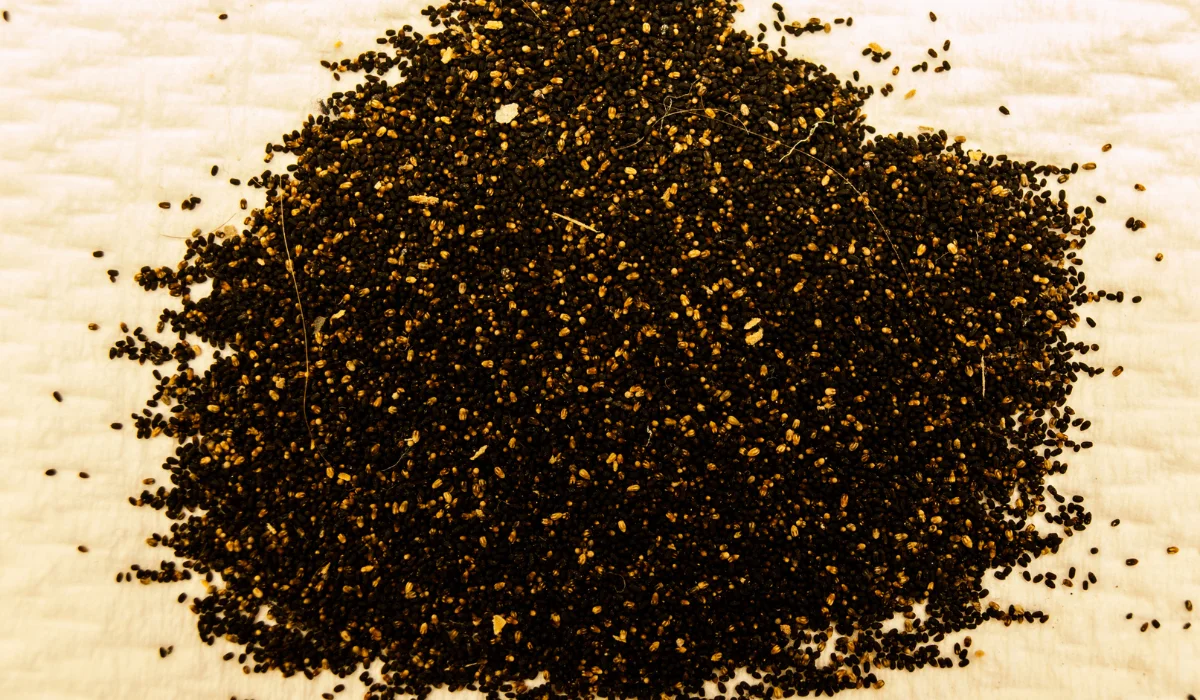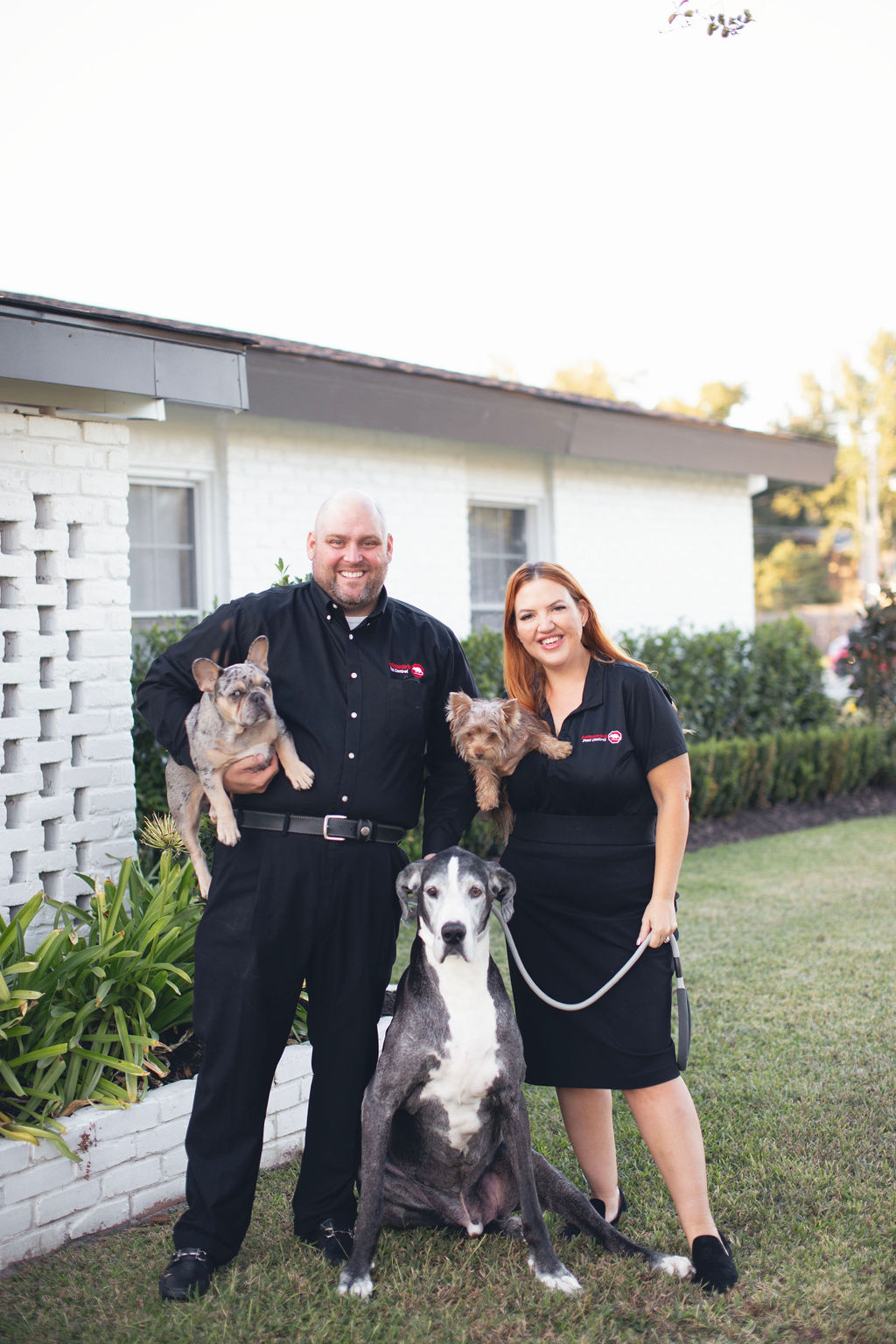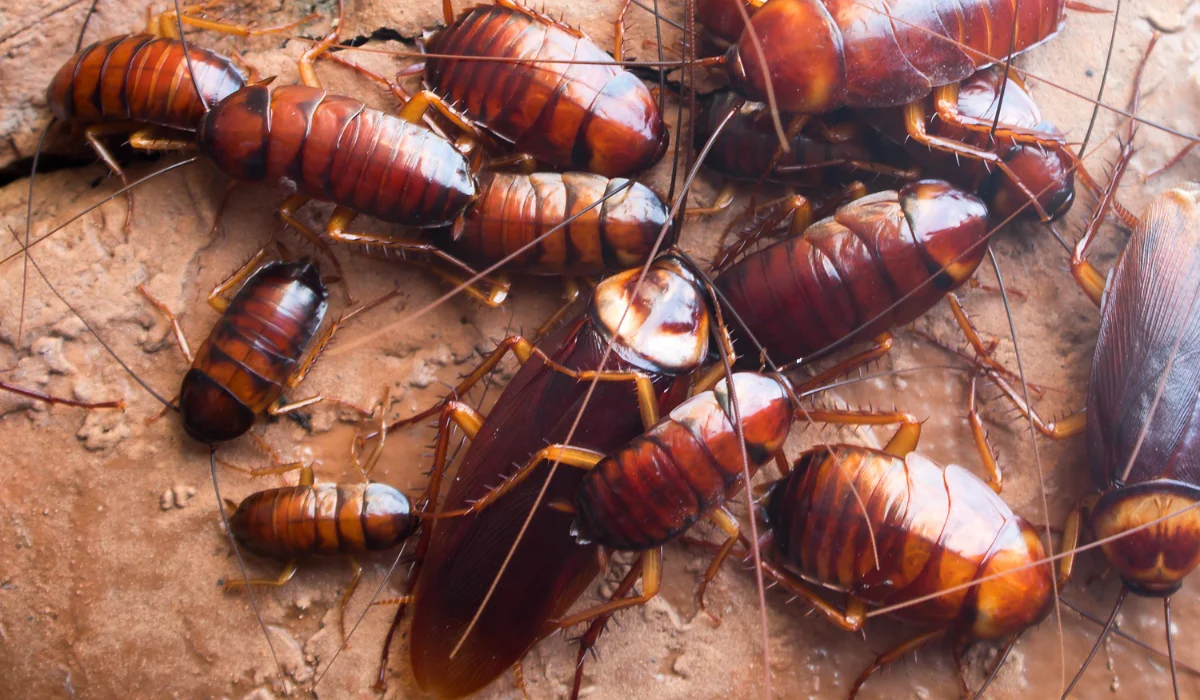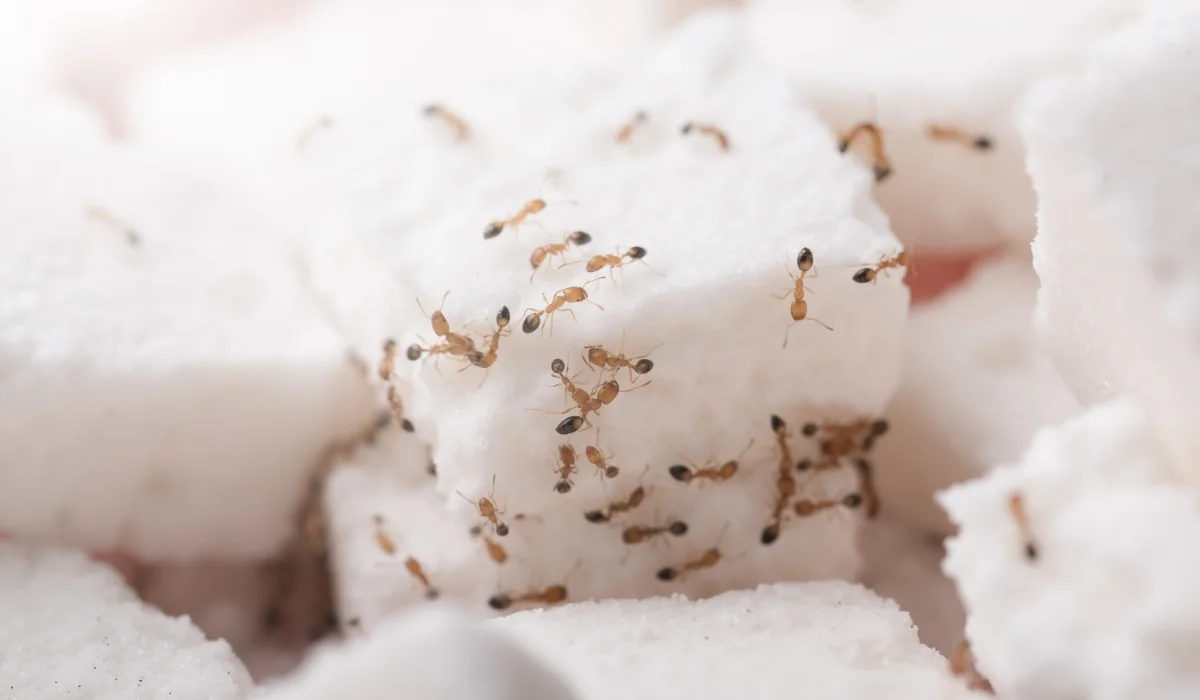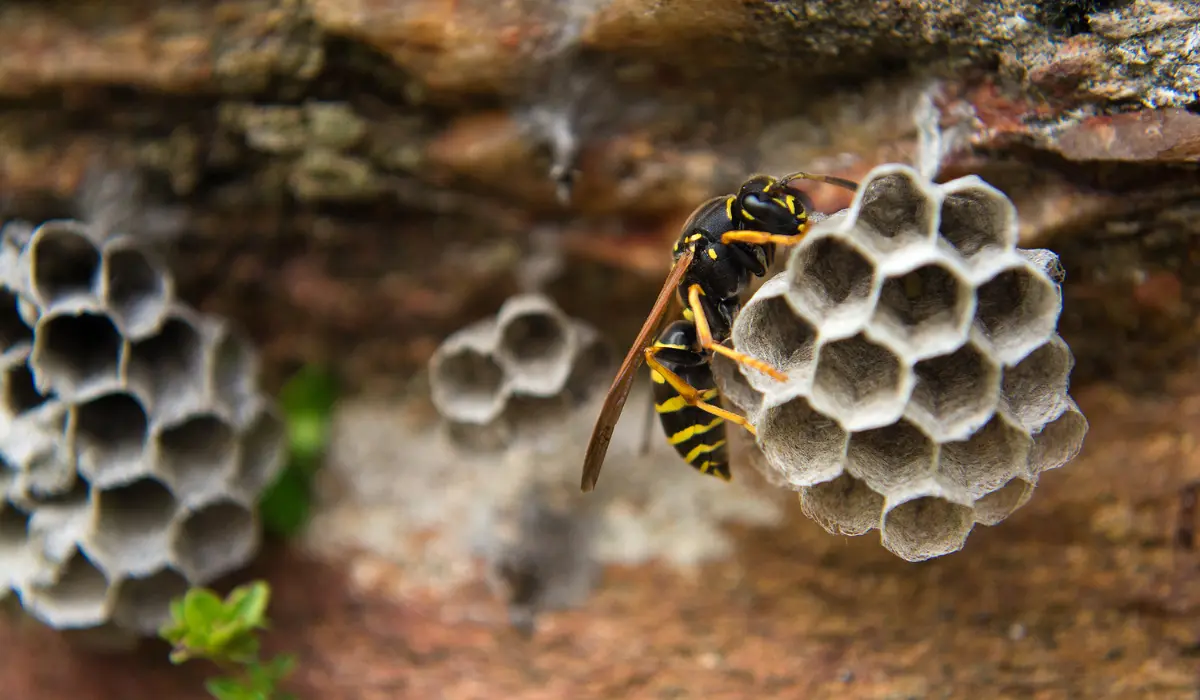Termites are sneaky. By the time you see visible damage, they’ve usually been munching away for months, maybe even years. But there’s one subtle clue that can help you catch a termite infestation early: their droppings.
If you’re a homeowner in Louisiana, spotting termite droppings or frass can be the first indication of a larger problem lurking behind your walls or beneath your floorboards. Knowing what to look for can save you time, money, and a lot of frustration.
Let’s walk through what termite droppings look like, where to find them, and what to do if you see them.
Key Takeaways
• Termite droppings often resemble sawdust or coffee grounds and typically accumulate near infested wood.
• Drywood termites leave behind frass, while subterranean termites do not.
• Frass piles are commonly found in attics, crawl spaces, and near windowsills or baseboards.
• If you find what looks like termite poop, it’s time for a termite inspection fast.
What Termite Droppings Look Like
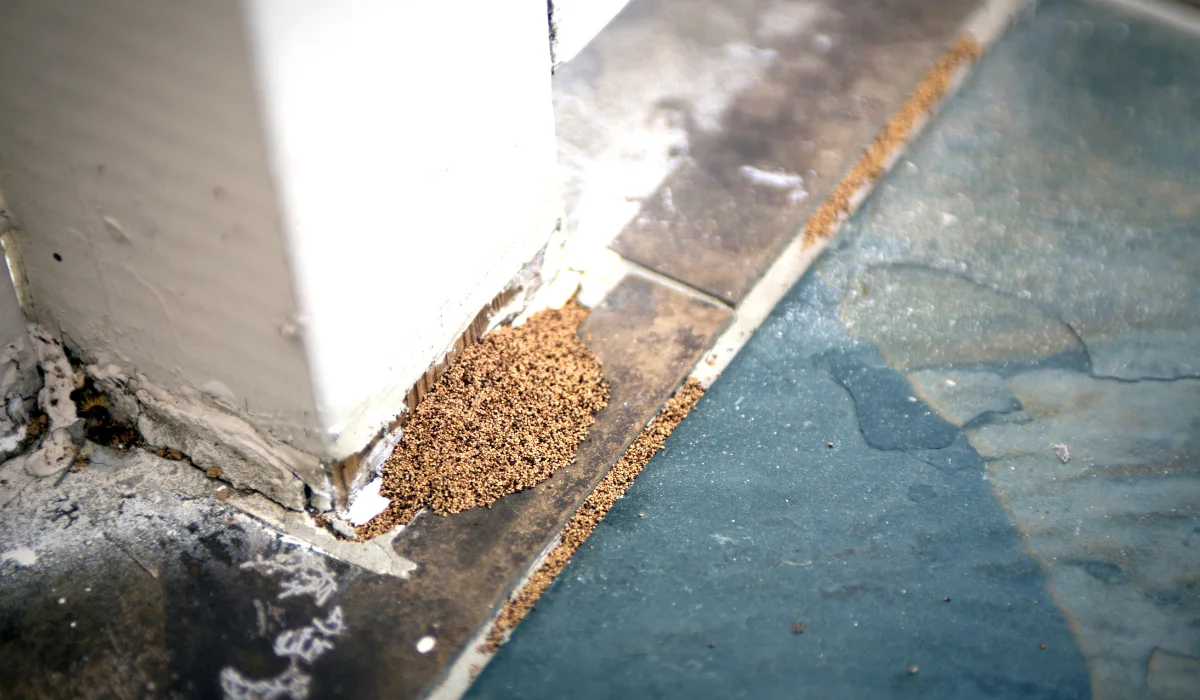
Termite droppings vary depending on the type of termite. In Louisiana, drywood termites are the ones that leave frass behind. These droppings resemble tiny, oval-shaped pellets with ridges along their sides. The color ranges from light tan to dark brown, depending on the wood they’re feeding on.
At first glance, termite droppings can be mistaken for sawdust or coffee grounds. But look closely; frass tends to pile up neatly, as if someone had poured it from a salt shaker. You might find it on windowsills, around baseboards, or beneath wooden structures, such as beams or attic supports.
Subterranean termites, on the other hand, don’t leave behind visible droppings. Instead, they build mud tubes to travel from their underground termite colonies to your home’s food source.
Where to Find Termite Frass in Louisiana Homes
Drywood termites are known for infesting attic spaces, wooden furniture, and the upper parts of walls and ceilings. Here’s where Louisiana homeowners often find termite droppings:
• In attic beams and rafters
• Along windowsills or door frames
• Behind drywall or baseboards
• Inside wooden furniture
• In crawl spaces or storage areas
These termites push their droppings out of small kick-out holes they create near their nest. If you find tiny piles beneath these holes, you’re likely dealing with drywood termites.
Other Common Signs of Termites
Frass isn’t the only thing to watch out for. Keep an eye out for other signs of termite activity:
• Mud tubes on foundation walls or in crawl spaces
• Blistered or peeling paint that resembles water damage
• Hollow-sounding wood when tapped
• Swarmers (also called winged termites) near lights or windows
• Piles of discarded wings, especially during the swarming season
The swarming season typically peaks in spring and early summer. That’s when winged termites leave their colonies to form new ones, and your home could be their next stop.
Types of Termites in Louisiana
Three main termite species cause problems in Southern Louisiana:
• Drywood termites: Known for leaving behind piles of frass. They live inside the wood they eat and don’t need soil contact.
• Subterranean termites: The most common and destructive type. They live in the soil and build mud tubes to access cellulose in wood.
• Formosan termites: A particularly aggressive subterranean species with large colonies. These are especially active in New Orleans and Baton Rouge.
Why Termite Droppings Matter
Frass doesn’t just tell you there are termites; it also tells you where they’re nesting. And if you’re seeing piles of frass out in the open, the infestation is already well established.
Ignoring these droppings can lead to severe termite damage. Termites feed on wood nonstop, and over time, they can weaken floorboards, framing, and other key parts of your home’s structure.
What To Do If You Find Termite Droppings
If you’ve spotted something that looks like termite poop, don’t wait. Contacting local pest control services is the most brilliant move. A licensed inspector can confirm the presence of termites, identify the species, and assess the extent of the infestation.
At LaJaunie’s Pest Control, our pest control experts conduct thorough inspections and provide targeted termite treatments that protect your home in the long term. Whether you’re in Baton Rouge, New Orleans, or a smaller Louisiana town, we’ve got your back.
Termite Treatment Options
Depending on the severity and type of infestation, your treatment plan may include:
• No-Tent Drywood Treatment: A precise, non-invasive method that targets drywood termites in specific areas using foam and liquid products.
• Bait Stations: Designed to wipe out subterranean termite colonies by targeting the workers who bring food back to the nest.
• Liquid Barrier Treatments: Applied around your home’s perimeter to block entry points and prevent further infestation.
All of our termite services come with a retreat guarantee so that you can stay pest-free with confidence.
How to Prevent Future Infestations
Getting rid of termites is one thing; keeping them out is another. Prevention matters, especially in humid Louisiana, where termite activity is consistently high throughout the year. Here’s what we recommend:
• Schedule regular termite inspections
• Fix leaky pipes and water damage near the foundation.
• Keep crawl spaces dry and well-ventilated
• Store mulch and firewood at least 20 feet from the house
• Seal cracks around windows, doors, and utility lines.
A proactive approach to termite control helps protect your most significant investment: your home.
Final Thoughts
If you see termite droppings around your Louisiana home, don’t ignore them. That little pile of frass could be the first warning sign of an infestation. Whether it’s drywood or subterranean termites, the faster you act, the easier the problem is to fix.
LaJaunie’s Pest Control offers expert termite control backed by years of experience serving homes throughout Southern Louisiana. Just give us a call, because we’re here to help you stay pest-free with solutions that work in our unique climate and soil.
FAQs
Do termite droppings smell?
No. Termite frass is dry and odorless, unlike the musty odor associated with mold or rot.
Are termite droppings harmful to humans?
Not directly. However, the droppings indicate a termite problem, which can compromise your home’s structure if left untreated.
What’s the difference between termite droppings and sawdust?
Frass is more pellet-shaped and uniform. Sawdust is flaky and uneven. Termites also tend to push frass out of tiny holes near their nests.
When is swarming season in Louisiana?
Swarming season typically occurs from late spring to early summer, especially after heavy rainfall. That’s when winged termites look for places to start new colonies.
 By: LaJaunie's Pest Control
By: LaJaunie's Pest Control 